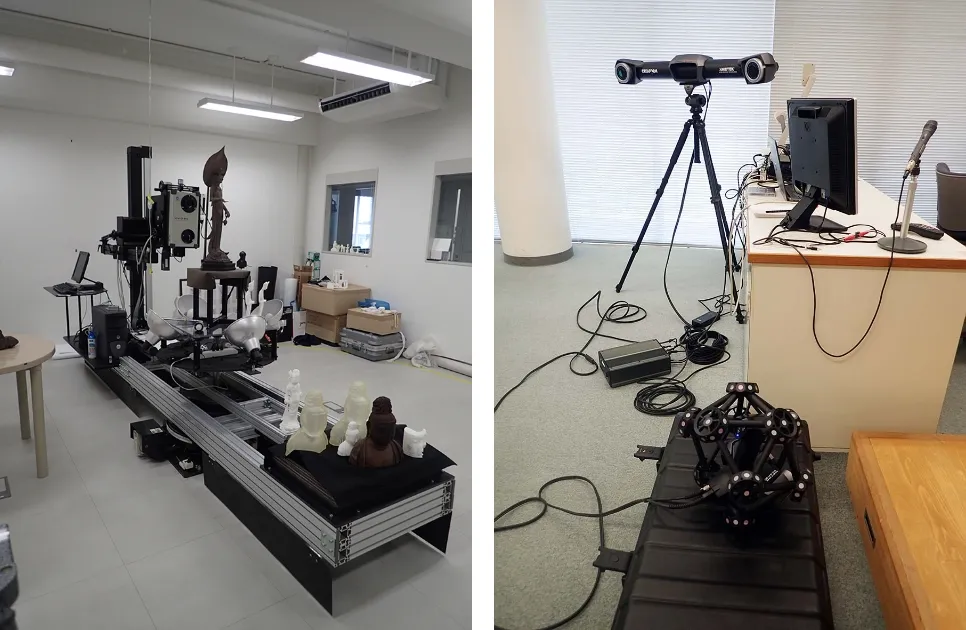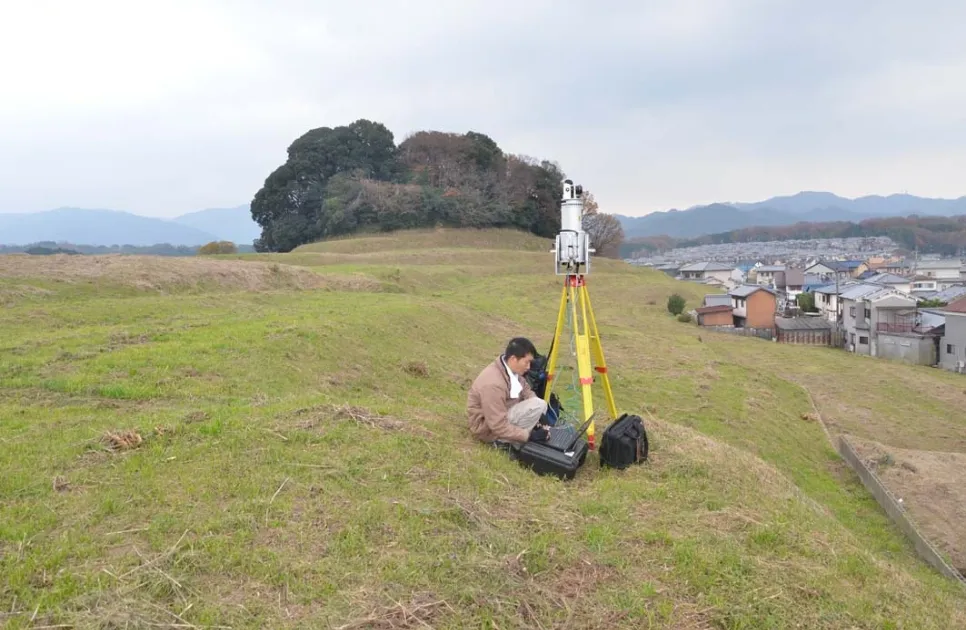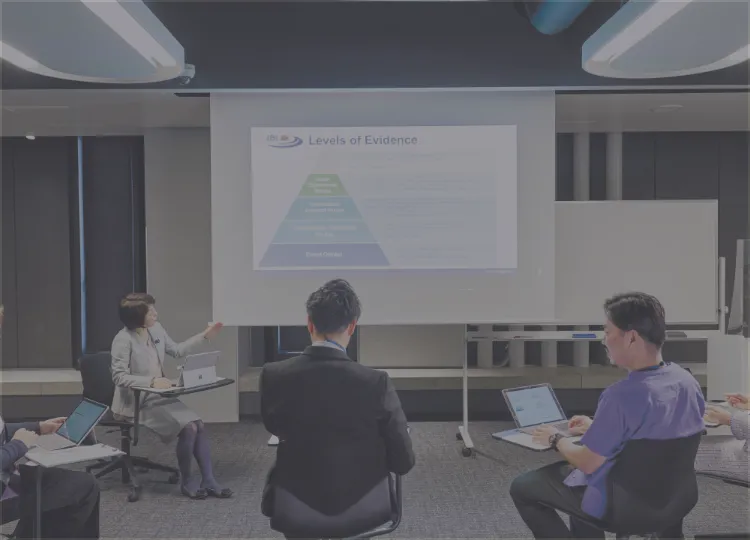
History Research Institute
History Research Institute Studies, which serves as the base for research into the region's history and cultural assets, promotes surveys and research in cooperation with local governments and specialized institutions. The results are widely published, and the Institute is also characterized by being a research institute that is open to the local community. The Institute is also promoting recording and replica production using advanced technology, 3D laser measurement of cultural assets. 3D measurements of cultural assets are also made available on the web.
History Research Institute was founded in 1980, triggered by the investigation of the Sannomaru ruins of Osaka Castle on the Osaka Campus. The current building was constructed in Shukugawa in 2002, and research has been conducted on the history and cultural assets of the region, mainly Hyogo Prefecture. The results of this research are widely open to the local community and are also used in student training. Based at the institute, we are engaged in research on regional cultural assets in an open manner.
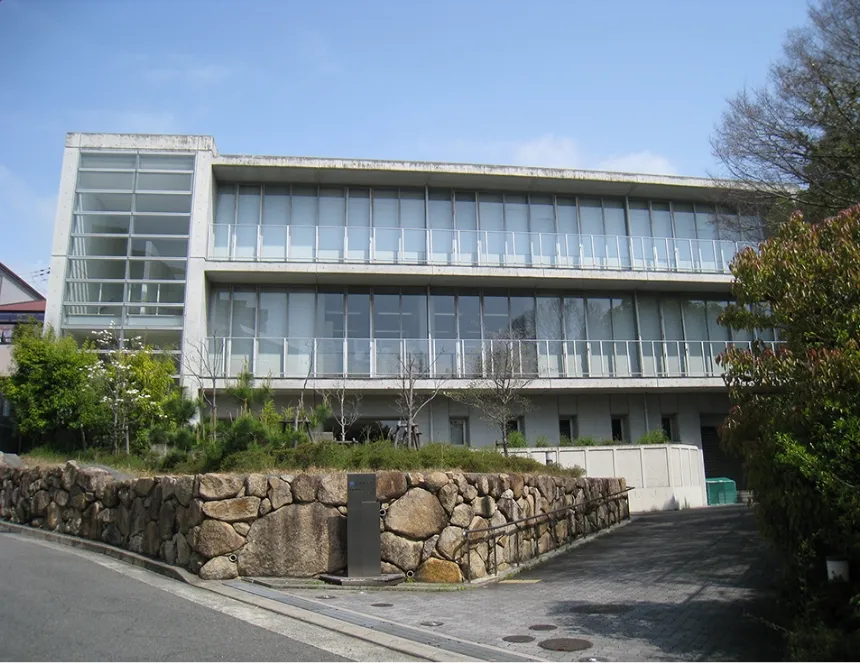
Past research
As part of this, we are conducting projects such as cultural property surveys in various regions and holding public lectures for the general public and students. Major research subjects in Hyogo Prefecture to date include Yayoi pottery in Harima, Ryushi Mitsuzuka Tomb in Tatsuno City, Saijo Tomb Group in Kakogawa City, Minamisho No. 3 Tomb in Kobe City, Bundou Tomb in Kami Town, Buddha statues at Tatsushinji Temple in Tamba City, Engyo-ji Temple in Himeji City, Arioka Castle in Itami City, Hyogotsu Site in Kobe City, Murozu Sea Excavation Materials in Tatsuno City, Early Modern Tamba Ware, Kobe Steel No. 3 Blast Furnace, and coastal industrial facilities in the Hanshin area. We have also conducted large-scale aerial laser measurements of Shiroyama Castle in Tatsuno City, Takeda Castle in Asago City, and Tatsuyama Stone Production Area in Takasago City. We have also conducted research on various cultural properties in areas other than Hyogo Prefecture in cooperation with local governments.
Going forward, we will continue to make use of cutting-edge cultural property information equipment systems, such as 3D laser measurement devices and 3D printers, to carry out surveys and research that transcend the boundaries of academic fields such as history, archaeology, art history, architectural history, and cultural property science, and aim to become a research center that is open to the local community.
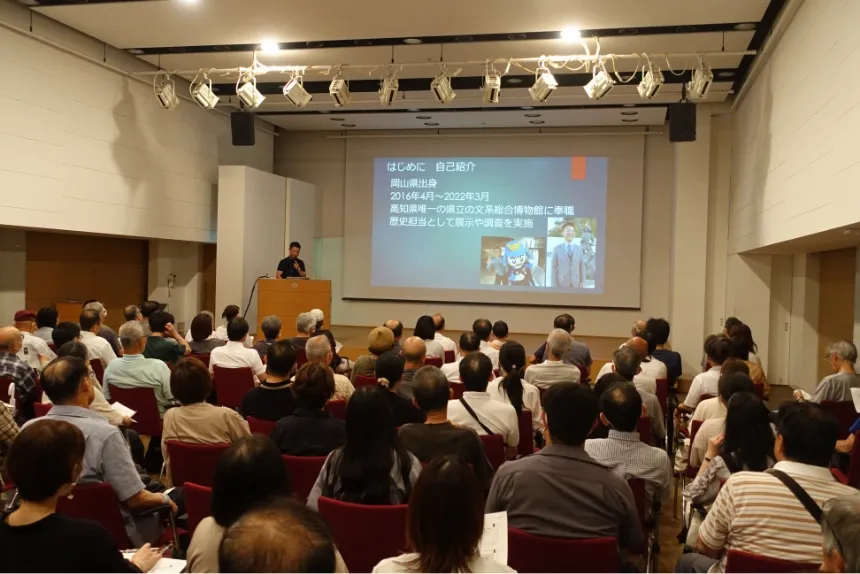
Characteristics of History Research Institute
Research on cultural properties using 3D laser measurement
You can move 3D images of various cultural properties around in your browser and view them from any angle!
Cooperation with local governments
We will create new learning opportunities that are closely connected to the local community through research into the history and cultural assets of the Hyogo region.
Main research findings
Otemae University, which has a long track record in historical and archaeological research in Hyogo Prefecture, has signed agreements with the Hyogo Prefecture, Kobe City, Tatsuno City, and Inagawa Town Board of Education. The School of Interdisciplinary Studies makes the most of this network and offers classes that utilize the facilities and equipment of the institute. In practical classes, students can directly touch the institute's materials.
Disseminating the results of laser 3D measurement
With permission, we post 3D laser measurements of various cultural properties taken with cutting-edge equipment on the web. You can freely view the cultural properties from various angles and in great detail on your computer or smartphone.
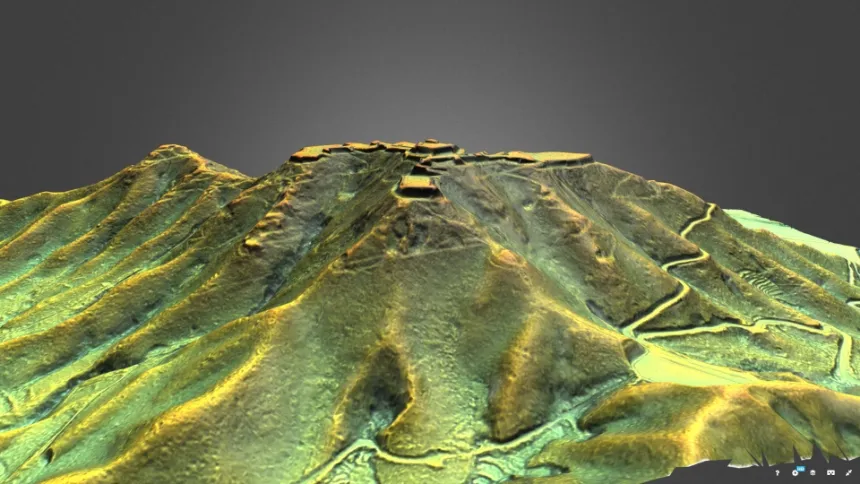
Survey of Shoshazan Engyo-ji Temple
In Harima Province, located in the southwest of Hyogo Prefecture, there was an ancient temple called "Harima Rokkaji" that dates back to ancient and medieval times. It was known that Rokkaji played an important role in the relationship with the local community, but clarifying the specifics of its history had been a challenge.
History Research Institute launched the "Medieval Yamadera and Local Communities" project in 2007 and has been conducting research on Shoshazan Engyo-ji Temple in the northwest of Himeji City. Engyo-ji Temple, which was founded in 966, is the head temple of the Harima Rokka-dera Temples and still preserves a wealth of historical and cultural heritage. To date, the project has achieved many results, including the restoration of the temple space using 3D aerial lasers and the comprehensive investigation of excavated artifacts, stonework, ridgepole amulets, documents and scriptures in the temple's collection.
We are currently investigating the documents held by Engyo-ji Temple, and with the help of students, we are photographing each old document and creating a catalogue that includes newly discovered documents. Taking advantage of the characteristics of History Research Institute, which has researchers in fields such as document history, archaeology, geography, and cultural property studies, we aim to continue to shed light on the history of Engyo-ji Temple from multiple angles.
"Study on the Rokkaji Temples of Harima" I, II, III (Research Reports 11, 14, 21 History Research Institute Otemae University 2013, 2015, 2021)
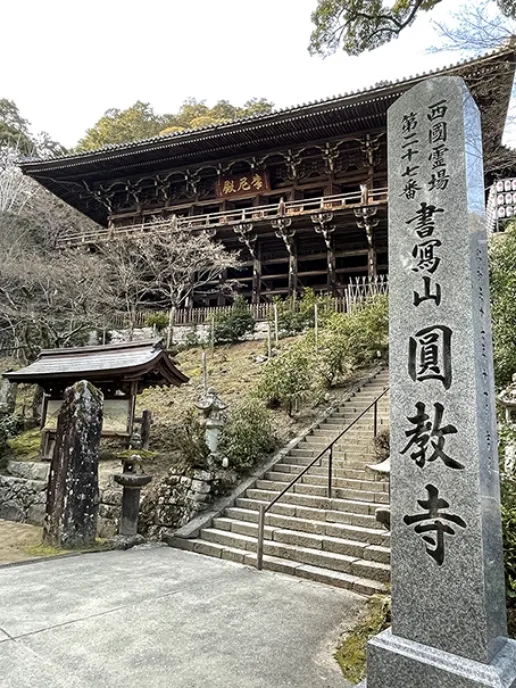
Research on the Murotsu Sea Excavation Documents
A large amount of ceramics collected from Oura Beach in Tatsuno City was organized and classified. Products from 16 production areas, including Hizen ceramics, were identified. We are investigating the role that Murozu, known as a port since ancient times, played in distribution.
"Report on the Investigation into the Salvage of Fish at Murozu and Oura Coasts" (Research Report 20 History Research Institute Otemae University, 2021)

Modern research into the Kansai ceramic industry
Using articles from National Industrial Expositions held during the Meiji period as material, we are conducting research into how pottery production in the Kansai region changed and developed with modernization. We are extracting descriptions of the pottery industry in the Kansai region (Osaka, Nara, Wakayama, Shiga, Kyoto, and Mie) from the National Industrial Expositions to clarify the development of kilns and the characteristics and transitions of products in each region.
"Modern Ceramic Industry in Kansai" I & II (Research Reports 17 & 19, Otemae University History Research Institute, 2017 & 2019)
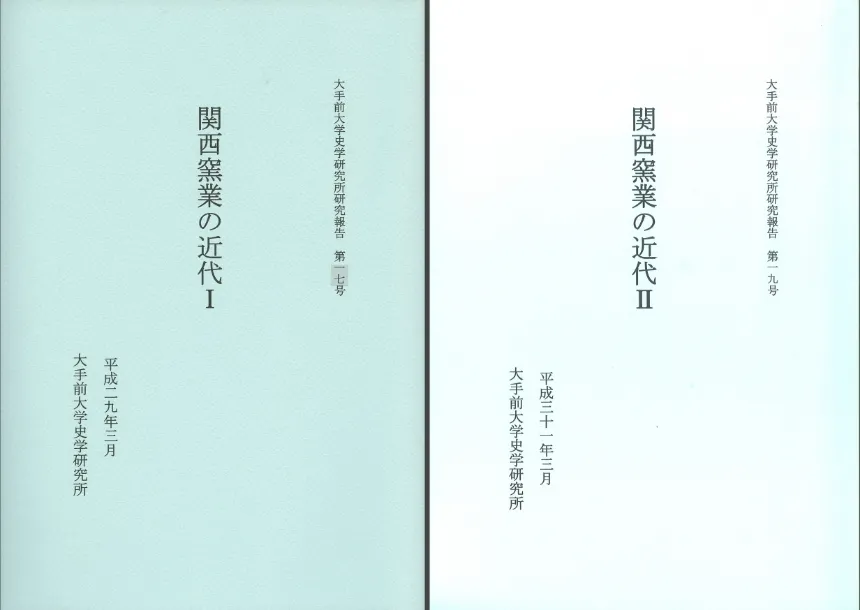
Research on industrial heritage in the Hanshin region
We are conducting research on modern industrial heritage sites, mainly in the coastal areas of the Hanshin region. In recent years, we have been conducting landscape surveys from the viewpoint of the sea, particularly on industrial and port heritage sites in the Osaka Bay coastal industrial zone. In addition to taking photographs and videos, we are also documenting them using laser 3D measurements.
"Osaka Bay Waterfront Industrial Zone Viewed from the Sea" (2018)
- Kobe Steel, Ltd. Kobe Steel Works No. 3 Blast Furnace Investigation Report (2019)
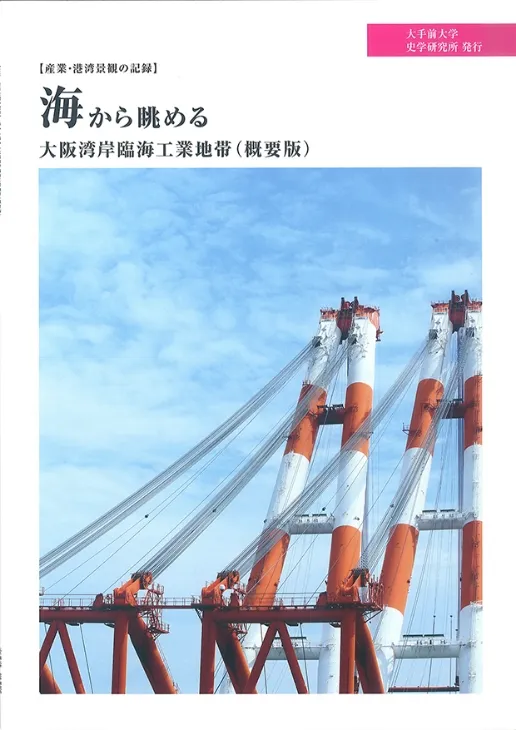
Survey of Buddhist statues at Tatsushinji Temple in Tanba City
Tatsushinji is a Soto Zen temple located in Hikami-cho, Tanba City, and is known for its collection of Buddhist statues with a unique style known as the Tatsushinji style. Some of these statues have been designated as Important Cultural Properties. We conducted a detailed investigation of the 59 main Buddhist statues, taking photographs and measuring them in 3D. We also transcribed records of the sculpture repairs made by the Japan Art Academy and compiled related literature.
"Report on the Investigation of the Buddha Statues at Tatsushinji Temple" 1 and 2 (Research Reports 15 and 18 History Research Institute Otemae University, 2015 and 2019)
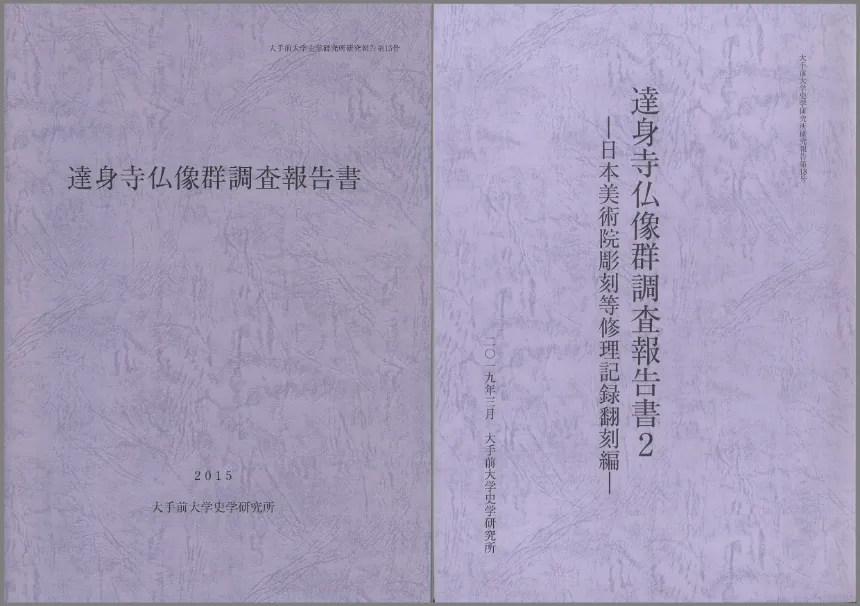
Research on the Bundo Tomb in Kami Town
Bundo Tomb is a typical horizontal stone chamber tomb (7th century) in Tajima. It was excavated by local people in 1948 and 1970, and attracted attention due to the luxurious grave goods that were unearthed, including a large sword and gilt bronze products. History Research Institute, in collaboration with the Kami Town Board of Education, organized and investigated the excavated goods, and published a detailed research report.
It is believed to be a circular tumulus, and from inside the large stone chamber, three gilt bronze swords, horse equipment, and many sueki ware wares have been excavated. The tumulus and excavated items have been designated as a historic site, place of scenic beauty, natural monument, and tangible cultural property by Hyogo Prefecture. It is located at a strategic transportation hub leading to the Sea of Japan, and is believed to be the grave of a person with deep ties to the royal authority.
"Bundo Tomb, Muraoka, Kami-cho, Hyogo Prefecture" (Research Report No. 13, History Research Institute Otemae University, 2014)
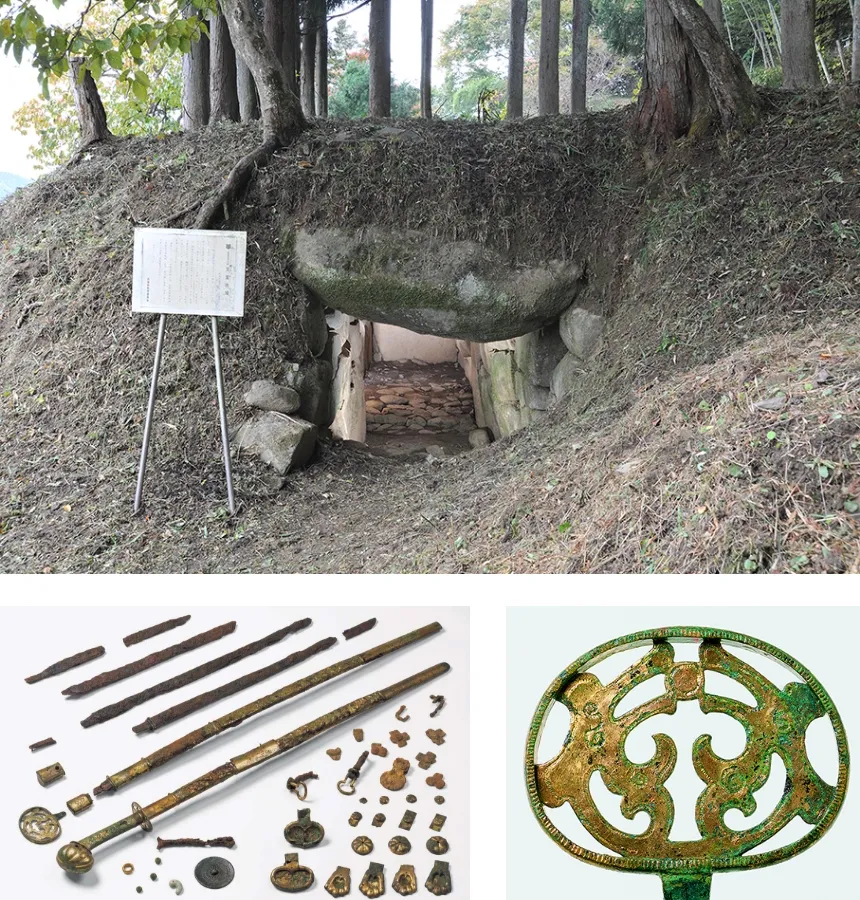
Research on the Ryushi Mitsuzuka Tomb Group in Tatsuno City
The Ryushi Mitsuzuka Tomb Group is located across Iboshi Town and Ibogawa Town in Tatsuno City, Hyogo Prefecture. This group of tombs has been known for a relatively long time, and is famous for Tomb No. 1 (a keyhole-shaped tomb) from which two triangular-rimmed mirrors bearing divine beasts were excavated in the past.
History Research Institute organized the Ryushi Mitsuzuka Tomb Research Team, which carried out research from 2006 to 2008, and carried out a detailed investigation into the exact shape and size of Tomb No. 1 and 2, as well as the structure of the remaining burial facilities. It was discovered that Tomb No. 1 contained an array of cylindrical vessel pedestals from the San'in region, revealing the image of a regional ruler with ties to Kinai and San'in.
"Research on the Ryushi Mitsuzuka Kofun Group - Survey of the Early Kofun Group in the Harima Ibo River Basin" (Research Report 9 of the Open Research Center, History Research Institute Otemae University, 2010)
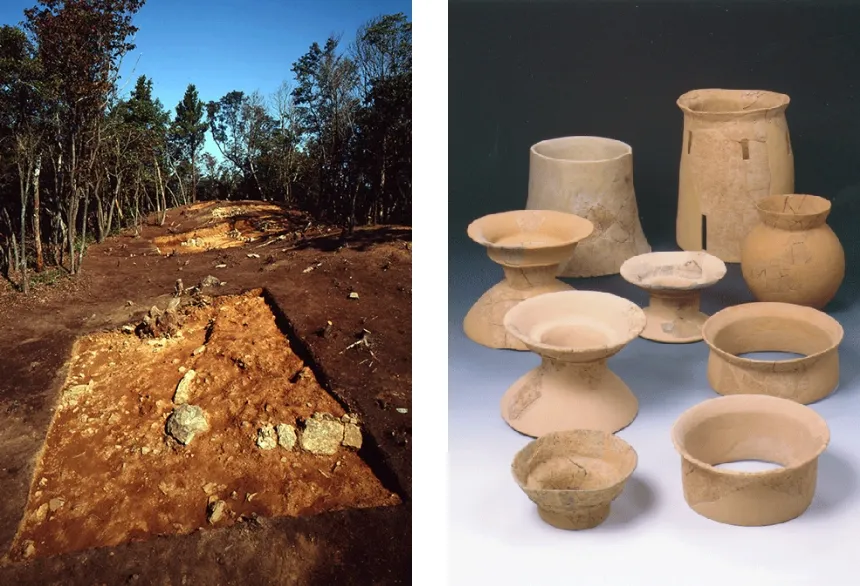
Survey of Minamisho Tomb No. 3 in Kita Ward, Kobe City
Minami-Minjo Tomb No. 3 is a late Kofun period burial mound located in Dojo-cho, Kita-ku, Kobe City, Hyogo Prefecture. Excavation work was carried out by History Research Institute over a three-year period from 2000 to 2002.
It is a circular tumulus with a diameter of 18m and a height of over 2.5m, and contains two burial facilities: a cave-in stone chamber and a stone sarcophagus. The cave-in stone chamber is an exquisite construction made by stacking relatively small square stones in multiple layers. It is also notable for being a left-sided stone chamber, with a sleeve on the left side when viewed from the back wall.
Grave goods such as weapons, horse equipment, accessories, and pottery were excavated from inside the stone chamber. It is dated to the mid-6th century, making it one of the oldest examples of cave-type stone chambers in the region.
"Minamisho No. 3 Tomb, Dojo-cho, Kita-ku, Kobe" (Research Report No. 8, Open Research Center, History Research Institute Otemae University, 2009)
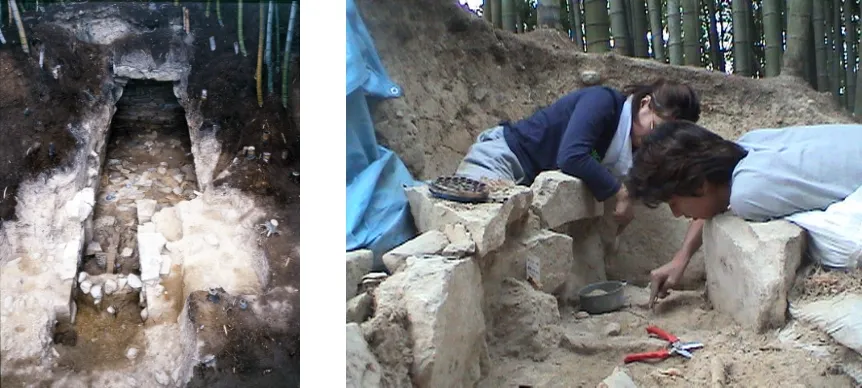
Publication List
Otemae University History Research Institute Research Report No. 23 "Kakogawa City Saijo Kofun Group: Gyojazuka Kofun Mound and Construction" / 2024
Otemae University History Research Institute Research Report No. 22 "Kansai Electric Power Sakai Port Thermal Power Plant Former Steam Power Plant Investigation Report" / 2023
Otemae University History Research Institute Research Report No. 21 “Research on the Rokkaji Temples of Harima III – Historical and Cultural Heritage of Shoshazan Engyo-ji Temple (3)” / 2021
Otemae University History Research Institute Research Report No. 20 "Murozu and Oura Coast Sealift Investigation Report" / 2021
Otemae University History Research Institute Research Report No. 19 "Modern Ceramic Industry in Kansai" II / 2019
Otemae University History Research Institute Research Report No. 18 "Dassinji Temple Buddhist Statues Survey Report 2" - Transcription of the Sculpture Repair Records of the Japan Art Academy - / 2019
Otemae University History Research Institute Research Report No. 17 "Modern Ceramic Industry in Kansai" I / 2017
Otemae University History Research Institute Research Report No. 16 "Tanyamagama, Uji, Kyoto Prefecture" - Structure of a modern Kyoto ware climbing kiln - / 2015
Otemae University History Research Institute Research Report No. 15 "Report on the Investigation of the Buddha Statues at Tatsushinji Temple" / 2015
Otemae University History Research Institute Research Report No. 14 "Research on the Rokkaji Temples of Harima II" - Historical and Cultural Heritage of Shoshazan Engyo-ji Temple (Part 2) - / 2015
Research Report No. 13 History Research Institute Otemae University, "Bundo Tomb, Muraoka, Kami-cho, Hyogo Prefecture" / 2014
Otemae University History Research Institute Research Report No. 12 "Collection of Ancient Wooden Tablets Related to Hyogo Prefecture" / 2013
Otemae University History Research Institute Open Research Center Research Report No. 11 "Research on the Rokkaji Temples of Harima I" - Historical and Cultural Heritage of Shoshazan Engyo-ji Temple (Part 1) - / 2013
Otemae University History Research Institute Research Report No. 10 "Environmental and Social History and Historical Landscapes of the Asian and Pacific Coastal Regions of the Indian Ocean" / 2012
Otemae University History Research Institute Open Research Center Research Report No. 9 "Research on the Ryushi Mitsuzuka Tomb Group" / 2010
Otemae University History Research Institute Open Research Center Research Report No. 8 "Minamisho No. 3 Tomb, Dojo-cho, Kita-ku, Kobe City" / 2009
Otemae University History Research Institute Open Research Center Research Report No. 7 "Comprehensive Research on Hyogo-tsu" - Latest Results of Hyogo-tsu Research - / 2008
Otemae University History Research Institute Open Research Center Research Report No. 6 "Modern Arts and Crafts in Hyogo Prefecture" / 2007
Otemae University History Research Institute Open Research Center Research Report No. 5 "Yayoi Pottery Collection and Chronology" -Harima Edition-/2007
Otemae University History Research Institute Open Research Center Research Report No. 4 "Umatate Ruins Excavation Report" - Verification of the Umatate theory of the Akamatsu clan's guardian yagata - / 2007
Otemae Otemae University History Research Institute Open Research Center Research Report No. 3 "Research on Early Modern Tamba Ware" / 2007
Otemae University History Research Institute Open Research Center Research Report No. 2 "New Perspectives in Pottery Research" - Pottery Production, Firing, Food and Cooking from the Jomon to Yayoi Periods - / 2007
Otemae University History Research Institute Open Research Center Research Report No. 1 "Hyogotsu Ruins" -Misaki Honmachi Site Excavation Report-/2006

